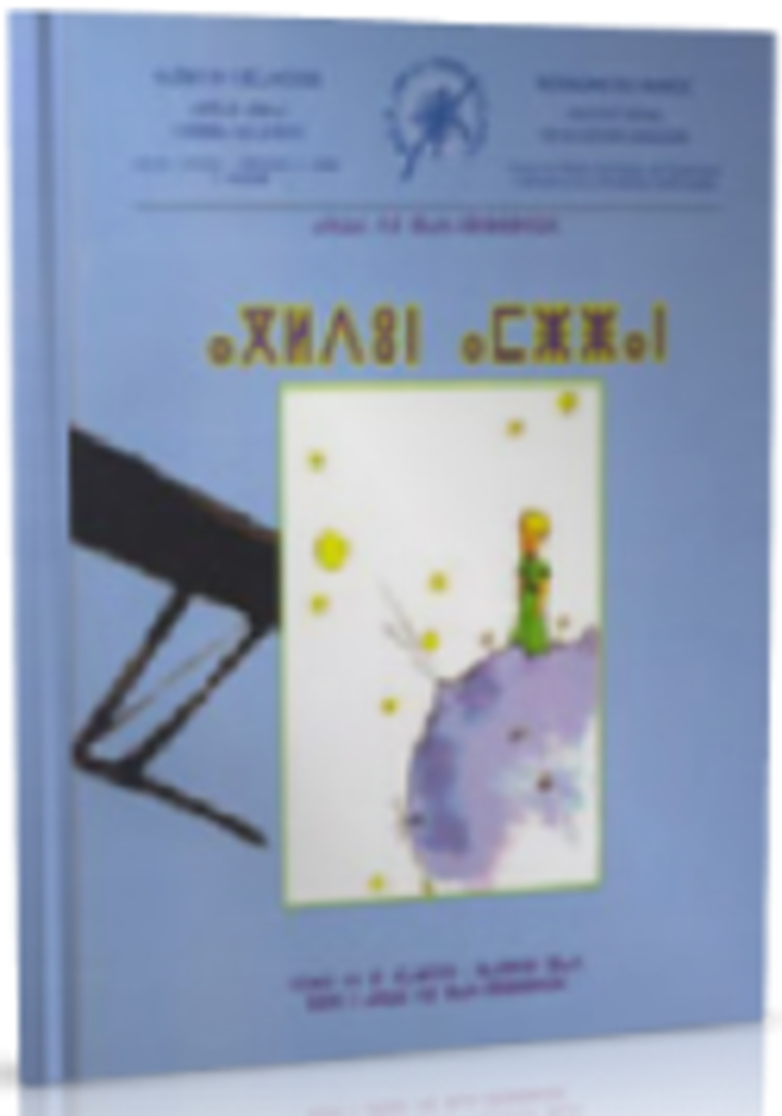"The Little Prince" in Amazigh: The story dialogues with nature and conveys the values of love and friendship

Habib Fouad, a creator and researcher at the Royal Institute of Amazigh Culture, published the Amazigh translation of “The Little Prince” by the well-known French writer Saint-Exupéry. The work received an encouraging response from those interested in Amazigh creativity and was considered by Amazigh activities as another important step in the path of promoting and enriching the Amazigh language and ensuring its further radiance.
According to the translator, this effort was marred by difficulties, some of which were related to translation into a language that was in the process of being revived. Others concern the issue of moving from a written text (in French) to a language that, until now, is predominantly oral. In light of these difficulties, problems arise in choosing the dictionary and style. The problem of creating a text in an Amazigh language that is unified at the linguistic level and at the same time close to the mother’s language and the child’s socio-cultural milieu also appears.
?Why choose The Little Prince
“I chose to translate this creative work because, firstly, it is a story directed at young people. And because, secondly, it is a work that consolidates the values of love, friendship, diversity and solidarity. These are values that are in harmony with what the Amazigh culture stands for,” confirms Habib Fouad.
He adds that The Little Prince is considered one of the most widely read works in the world. It has been translated into dozens of world languages, the most recent of which (May 2005) was its translation into Tuba, the language of one of the indigenous groups in Argentina.

Moreover, this Amazigh creator says, this story, which he read when he was young, influenced him. “Her hero speaks with flowers, valleys, animals, volcanoes and other components of nature, which is the same thing we enjoyed in Berber tales.”
“Then the most important events of the story took place in the desert, the Tuareg and Berber region par excellence. Since I come from a family that relies on travel from the same region, I decided to provide the children with this Berber translation.”
Translation difficulties
Habib Fouad considers that his translation of The Little Prince is directed to recipients geographically limited to the south-eastern region of Morocco, despite the fact that this variation is close to the southern and central branches. He emphasizes that the limited reception is also due to the fact that Amazigh is still new to school, and this is what will prevent, at least for now, a significant number of children from being exposed to the work.
In addition, Habib Fouad believes that adopting the Tifinagh letter in writing the story is also a difficulty, as long as those interested in the Amazigh language are accustomed to reading in the Latin and Arabic letters and are not yet accustomed to reading in this letter.
He adds that working on the dictionary, in turn, was one of the difficulties that came his way while translating the story. Some concepts do not exist in Amazigh, “at least in my opinion and within the limits of my knowledge.” He had to search for it in various existing dictionaries and research and work hard in the field of derivation. “For example, the prince does not exist in Amazigh culture despite the presence of the king. Because we call the king Aklidun, I decided to derive from this word the name prince. When I returned to the “Amawal” dictionary by the late Mouloud Maamri, I found that he gave this concept the word Aklidun, which is the same term. Which I used. The same difficulties, and more, I faced whenever I found myself faced with concepts related to modern industries and technologies.”

Abstracts from the translation
Habib Fouad believes that the Amazigh language is currently undergoing a transition from oral to written. It is considered, therefore, that translating a narrative text such as The Little Prince must give priority to narrative, using audio equipment and with a “narrative” voice, as we used to know in the past. "This is something that I could not accomplish now. This does not mean that the written text is not important. It is necessary for teaching and disseminating culture and knowledge. However, attaching the audio text to the written text is considered the best way to ensure an optimal radiation of the Amazigh language and culture and to ensure effective communication with the largest possible number of recipients." Who still use oral channels as their main means of communication.
Source : websites

